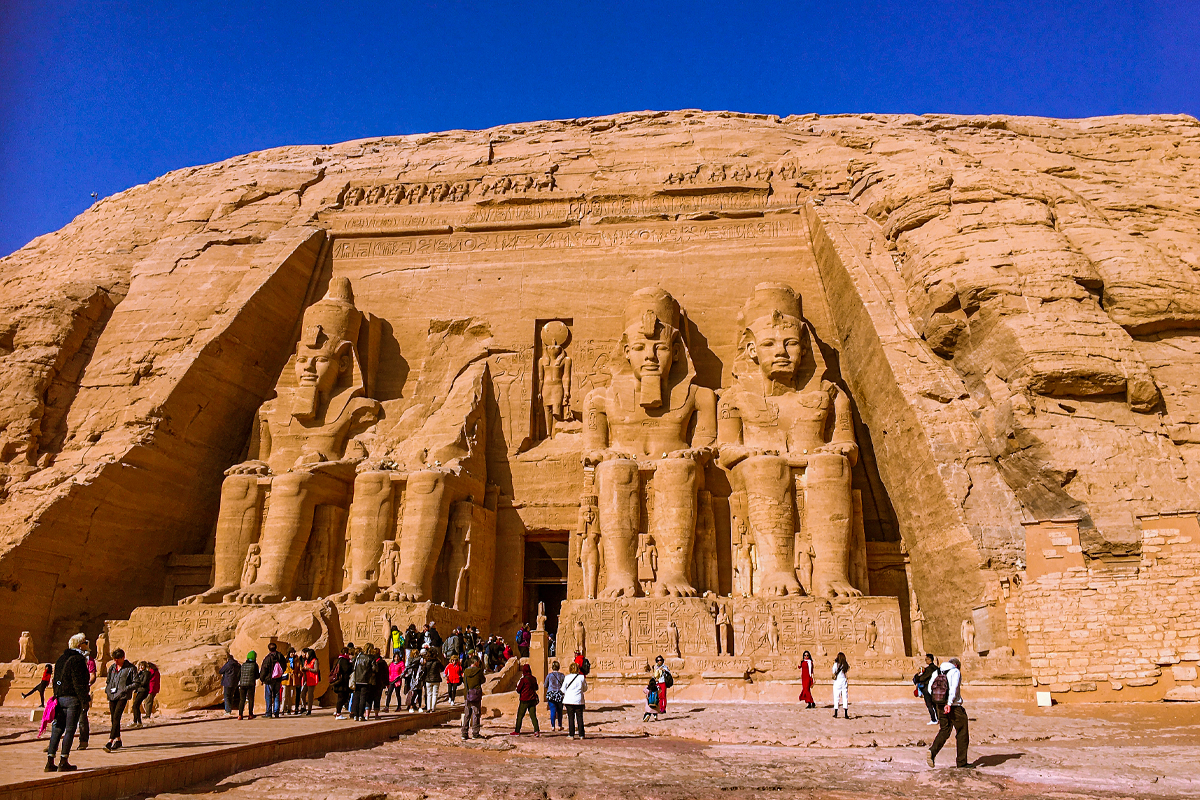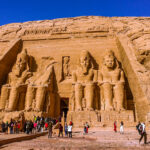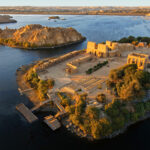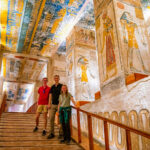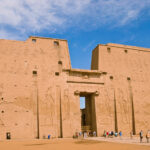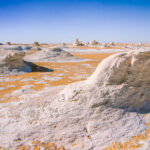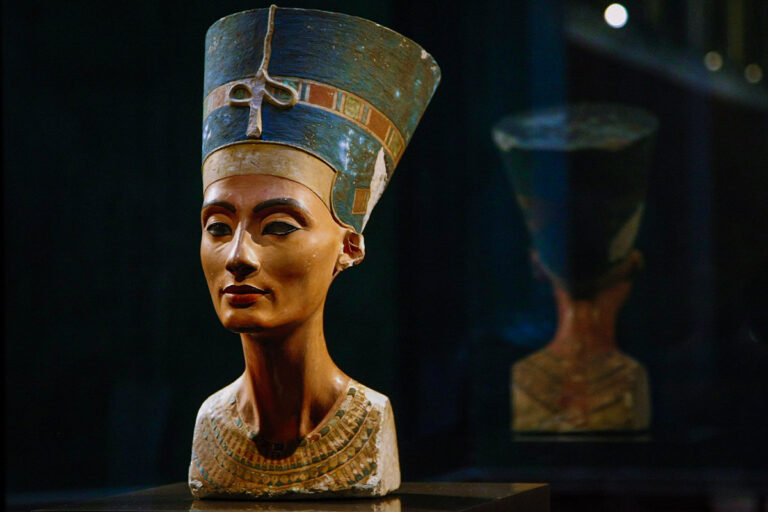Egypt itinerary 6 days, Egypt is one of the most popular tourist destinations in the world, and there are many magical places to see there. When people think of Egypt, they often think of all the movies and cartoons (such as The Prince of Egypt, The Mummy, and Cleopatra) set there.
Do you only have six days to see Egypt and want to know how to plan a six-day Egypt itinerary? We can help you plan a 6-day trip to Egypt, including arriving in Cairo, Luxor, and Aswan and seeing the sights there.
A six-day trip to Egypt is enough time to see the best sights and learn about the country’s history. Six-Day Trip to Egypt When you travel between Cairo, Luxor, and Aswan, you can learn about Egypt and satisfy your curiosity as much as possible. You should put a 6-day Egypt trip and an unforgettable river cruise on your list of places to visit.
Day 1: Giza Pyramids Tour / Egyptian Museum / Coptic Cairo Tour

On the first day of your 6-day trip to Egypt, you will land in Cairo and visit the Pyramids of Giza, the Egyptian Museum, and Coptic Cairo.
Giza Pyramids Tour
The Giza pyramids are built with some of the earth’s oldest and most perfect stones. The pyramids of Giza were built in the third millennium before the Common Era (BC), and it is believed to have been built in the 3000s. The absence of writing on these pyramids may be the most apparent difference between them and others. Species, making the puzzle even more challenging to solve. The height of the pyramid of Cheops is 138.5 meters, the pyramid of Kaveri is 136.5 meters, and the pyramid of Micrinus is 65 meters. The name of the pharaoh who ordered the construction of each of the three pyramids is written on them. The Great Sphinx of Giza is the most famous stone statue in the world, and it is close to the pyramids, and the story tells that it was built to protect the ancient Egyptian pyramids and royal tombs.
Egyptian Museum

The Egyptian Museum is located in Tahrir Square, one of the city’s oldest parts, and is also called “Tahrir Square.” The building’s front façade, designed in the neoclassical style by the French architect Marcel Dorgnon, can be seen from a distance. At the entrance is a beautiful garden with trees and 24 plaques honoring essential people in Egyptology, such as Auguste Mariette, François Chapas, Johannes Domitchen, Conradus Lemmans, Charles Wycliffe Godwin, and many more.
There’s something eerie about walking up the museum’s steps and into the Pantheon to salute Egypt’s famous kings and queens. After going through so many rooms filled with artifacts from the past, it’s hard not to believe that these ancient civilizations did exist. The first people who lived there thought the way they did and felt what they did about 7,000 years ago. This historical site is a great place to start if you want to learn about the country and its hidden gems.
The small galleries inside have a lot of space, and the walls are very high. This building has ground-floor windows and skylights that let in light from the outside. As in ancient Egyptian temples, the relics are placed in the museum’s central atrium, the highest point. There are two primary levels where items are used. There are sculptures, sarcophagi, paintings, and wall reliefs at ground level, which are very big. Themed displays on the first floor include manuscripts, statues of deities, royal mummies, everyday items, portraits of mummies, unfinished sculptures, Greek and Roman statues and vases, and other items made for use in the afterlife.
Coptic Cairo Tour
The Coptic Quarter is what comes to mind when you think of Cairo, Egypt. By AD 45, Saint Mark had brought Christianity to Egypt, and a group of Christians called the Copts had formed. The Coptic Quarter is a small area with a large number of churches.
Saint-Serge Church
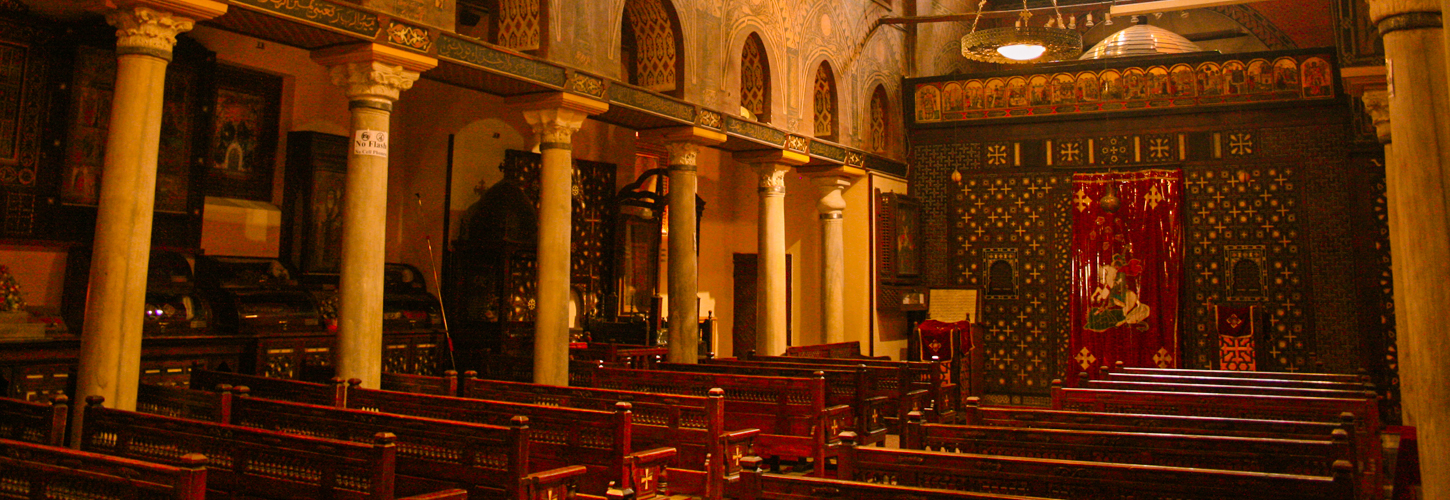
Saint-Cergue was one of the first churches built by Christians. It was built in the third or fourth century AD. The church was named after a military leader who later became a Christian. Tradition says the Holy Family hid in a cave, so the Christians built a church there.
The Ben-Ezra Synagogue
This synagogue is the most beautiful building I have ever seen. The outside has nothing, but the inside is all the action. The design of the ground floor, in particular, is similar to that of the Coptic Church.
Sainte-Barbe Church
Saint Barbie died for his faith. Although raised in a wealthy pagan family, she became a Christian to please her father. Her father hit her on the head and killed her. Her body is buried here. The remains of St. Barbara are preserved in a small chapel inside the church. This church is separated from the rest of the church by an arched wooden wall and has beautiful Coptic icons on its walls.
Hanging Church
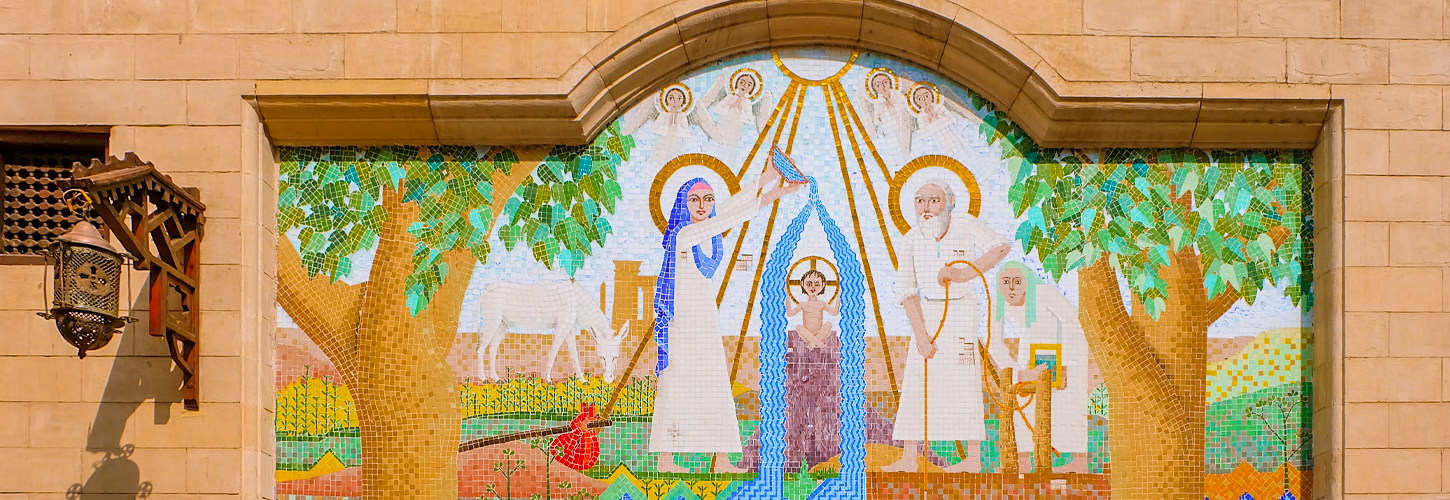
St Mary’s Church is a beautiful landmark accessed by steps leading to an entrance with mosaics of scenes from the Bible. The name “The Hanging Church” comes from the fact that it was built on the trunks of palm trees used as legs and dates back to the fourth century.
The interior is beautiful, with a solid marble pulpit on 13 columns (one for each of Jesus’ twelve apostles). The dark pillar symbolizes Judas, who betrayed his friends. In the church’s vault is a 4th-century Christian fresco that has not been repaired.
In the atrium is a Coptic image of the Virgin Mary holding Jesus. Moving around her makes us feel like she has eyes on us. Although the two works are only outwardly similar, the Coptic Church has taken the name “The Egyptian Mona Lisa.
The Coptic Museum
This museum used to be a private house, but it was built in the style of a mosque. The owner was an avid collector and had dozens, if not hundreds, of Coptic art pieces from the time of the Greco-Romans until the Islamic conquest.
Saint Georges’s Church in the heart of the Coptic district

Saint George is located in the middle of the Coptic Quarter, and people from all over the world are welcome to stay there. In Cairo, Egypt, a Christian church was built on an ancient Babylonian fort site in the 10th century. Octavius Augustus, the first Roman Emperor and adoptive son of Julius Caesar, made this last change. The Coptic Church is a place of worship for Coptic Orthodox Christians. Built on top of one of the remaining Romanesque towers, it is connected to the Abbey of St. George and is not open to the public.
The unique circular shape of the church emphasizes how large it is and how different it is from other buildings. That’s right – the only church in all of Egypt is in the shape of a circle. One of the most famous saints in the Middle East, who was murdered in AD 303 for refusing to obey a law that said Christians did not exist, was the inspiration for the design of this colorful house of worship with a dome on top. The doors are accessed by a flight of stairs that lead to what remains of the old tower. On either side of the stairs are bas-reliefs of Saint George and the Dragon. The inside is roughly the same size as the outside and is covered with paintings of saints winning battles for Christianity.
Day 2: From Cairo to Aswan

On the second day of your 6-day trip to Egypt, you must fly from Cairo to Aswan.
Before you leave the hotel and drive an hour to Cairo International Airport from Giza, have a hearty breakfast there. You will fly to Aswan, about an hour’s drive away. Make sure to spend some time at the Nubian settlement in Aswan when you go there.
As a resident, you will enjoy a utopia with some of the world’s most unique plants, animals, artificial buildings, symbols, and colors. Al-Fadija, Al-Areqat, and Al-Kunuz are three different Nubian tribes; each beach has its own culture and traditions. The Nubian Museum in Aswan contains beautiful hand-drawn pictures, handicrafts, and jewelry made by local artists.
Stop by a local Nubian home in a small village for a traditional Nubian breakfast of mint tea and a photo opportunity with the crocodiles. Almost every home in the Nubian community has a crocodile. At Nubian Market, you can purchase a unique souvenir of your time in Aswan before returning to your hotel in Aswan.
Day 3: Aswan Tours (Aswan High Dam – Philae Temple)
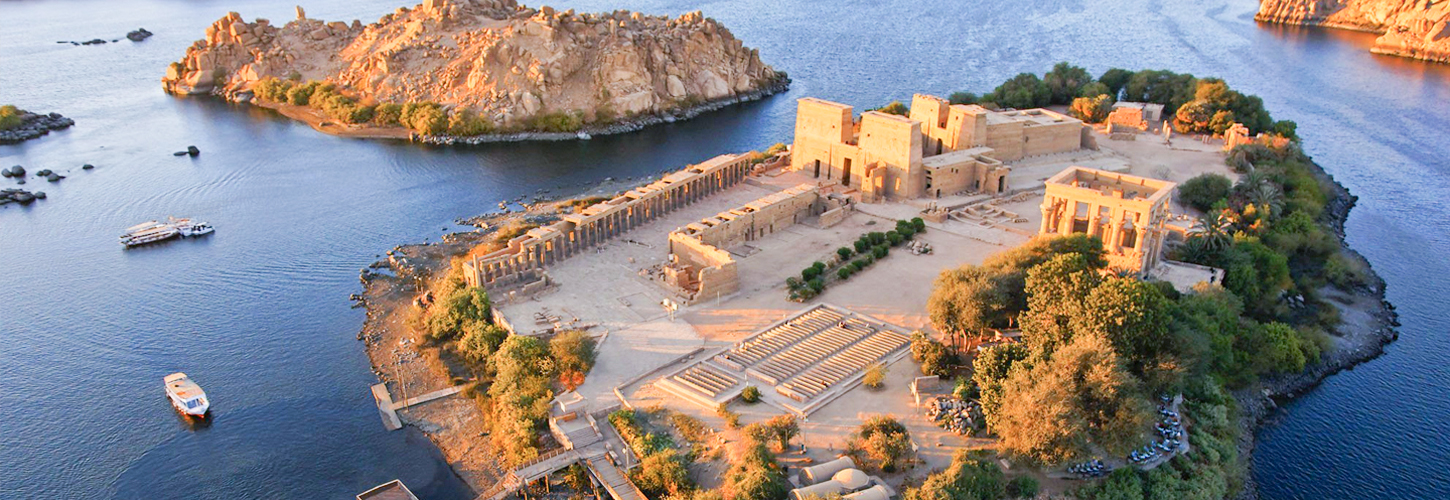
On the Third day of 6 days Egypt tour, begin your adventure at Aswan High Dam and Philae Temple.
Aswan High Dam
The Aswan High Dam, constructed in the 1960s in response to devastating floods in the region, is a great site to start your day of sightseeing in Aswan.
The Dam was built primarily to reduce the severity of the Nile’s yearly floods, often wiping out agricultural production and leading to genuine food shortages. In addition to enabling over half of Egypt’s electrical energy needs to be met in the year of its opening, the plant also allowed the country’s electrical grid to be extended to the great majority of human settlements.
The creation of Lake Nasser, with a total size of 6000 km2, resulted from the High Dam’s construction, which also necessitated the relocation of numerous ancient Egyptian sites, including the Abu Simbel temple, and the uprooting of a sizable portion of the local population.
Philae Temple
Egypt’s Temple of Philae is one of the most significant and stunning structures along the Nile. Its reputation as “The Pearl of the Nile” is well-deserved. You will find yourself standing before one of the seven wonders of the ancient world when you visit these thousand-year-old stones that contain legendary tales of immense importance. During the New Kingdom, the province of Nubia, where Philae is situated, was added to the kingdom of the pharaohs and became home to one of the most significant temples in Egypt.
The goddess Isis, the female goddess of love, magic, and maternity, is worshipped in the Philae Temple. Several ancient faiths have a god, such as Isthar in ancient Mesopotamia and Hera in ancient Greece.
According to Egyptian mythology, when Osiris, ruler of Egypt and Isis’s husband, was murdered by his brother Seth, who scattered his body parts over the country, Isis gathered the pieces, pieced them together, and brought her husband back to life. The island of Philae, where a temple dedicated to Diana would one day be constructed, became her haven from Seth’s anger.

When it was at its peak, Philae was the center of the Isis cult in Egypt, but other gods and even pharaohs may have been worshipped in some of the temple’s many chapels and halls. The emperors of the Hellenic and Roman periods erected magnificent structures in honor of this goddess, ushering in the period’s most remarkable magnificence.
Because of the impending flooding caused by the building of the Aswan Dam, the ancient Temple of Philae, we had to be relocated from its original position on the same name island to its present location a few kilometers away. This is why it is almost required for all Nile cruises to stop here.
Step inside the temple to see stones that have been around for a millennium and are etched with hieroglyphics that relay the history of Ancient Egypt. Interestingly, the final Egyptian hieroglyphics ever inscribed date back to the year 394 of our time and are housed at the Temple of Philae.
Temple of Isis, the largest of those found there, was decorated and improved during the reign of the Roman emperors; other notable structures from the Roman era include Hadrian’s Gate and Trajan’s Kiosk; the Temple of Hathor, dedicated to yet another critical Egyptian female deity; and the iconic towers that mark the entrance to the complex.
These structures illustrate the temple’s former glory. This temple was one of the very last in Egypt to be deserted.
The temple of Philae is a must-see while touring Egypt because of its stunning architecture and rich history.
Day 4: Excursions to Luxor / Karnak Temple – Luxor Temple
On the fifth day of the Egypt itinerary six days, Visit Luxor’s unique attractions, Karnak Temple and Luxor Temple.
Karnak Temple

One and a half kilometers long and half a kilometer wide, the Karnak Temple in Luxor “Luxor” on the eastern bank of the Nile is a group of temples in the same area. Throughout more than two millennia, each pharaoh of Egypt added to, reshaped, and improved the built environment. Senusret I, Thutmose I, Amenophis IV “Agenaten,” Hatshepsut, Benoujim I, Set 1, Ramesses II, Horemheb, Osorkon IV, and Taharka are just some of the known pharaohs who contributed to the construction of the Karnak Temple. On the south side of Karnak is the temple of the goddess Mut, wife of Amun. The main section of the temple was dedicated to the god Amun, while the other half was dedicated to the god Montu, the supreme deity of ancient Thebes.
Crossing the first tower of Karnak, built by Pharaoh Nectanebo of the XXX dynasty, the last dynasty of the pharaohs, one enters the first courtyard, which contains the statue of Ramesses II, which Pharaoh Panogim used, the column of Taharka, and chapels with a small temple of Ramesses III. When you reach the room dedicated to Seti I and his son Ramesses II after passing the second tower, you will see 134 massive columns in six rows, each 21 meters high. This is one of the many great attractions of the Karnak Temple.
Walk through the fourth tower to the fifth and sixth towers, and you will come to a small temple of Thutmose III, very well preserved in a color that was built in honor of Amun-Ra; then continue walking until you reach the tenth tower, where you will find the constructions of Amenhotep I, Amenhotep II and Amenhotep III. There used to be many obelisks in the Karnak Temple, but only today
Other interesting places in the Karnak temple complex:
The open-air museum
There are several well-preserved chapels, including one dedicated to the god Amun by the female pharaoh Hatshepsut and another to the sacred compound of Amun by Sesostris of the 12th dynasty. Interesting reliefs are carved on a variety of stones from various temples.
Khonsu’s temple
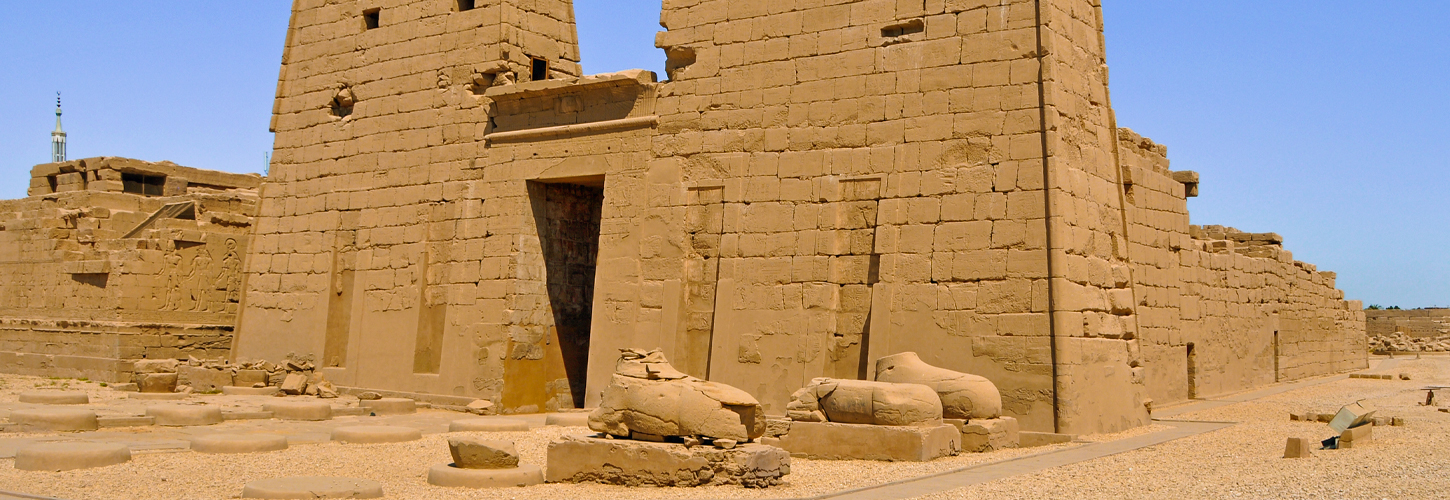
The temple was built by Ramesses III and dedicated to Khonsu, god of the moon and son of Amun and Mut. Ramesses IV and Ramesses XII completed the reliefs.
the temple of montu
Amenhotep III built the most miniature temple in the Karnak complex.
Mut’s temple
Amenhotep III and subsequent Greek pharaohs, including Ptolemy II and Ptolemy III, ordered the construction of the Temple of Mut, which was initially decorated with hundreds of black granite sculptures of various deities, notably the goddess Sekhmet.
There were many additional temples to the gods at Karnak, although many were in ruins or buried underground. The Temple of Ma’at is one such example.
The Luxor Temple
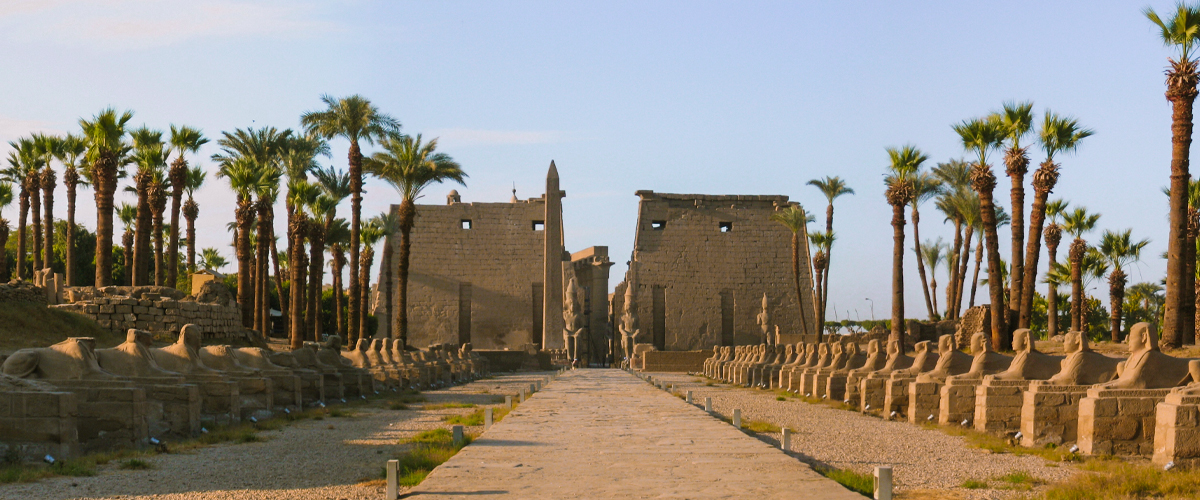
Luxor Temple is located in the heart of the city of Luxor in the Aksur region on the eastern bank of the Nile River, and it is one of the best attractions in Luxor and one of the most important temples in all of Egypt. The temple was started by Ramses II the Great and completed by Amenhotep III, but other pharaohs, including Tutankhamun, Hatshepsut, Horemheb, and Alexander the Great, also contributed to its construction. The Luxor Temple is 65 meters wide and 250 meters long and was built in honor of the god Amun-Ra, his wife, the “goddess Mut,” and their two children, Junsu.
At the entrance to the temple, there are two colossal black statues of Ramesses II and two obelisks made of red granite, although only one remains today. The first room of the temple contains 74 columns in a double row decorated with statues of Pharaoh Ramesses II, with hieroglyphic inscriptions, and with depictions of Ramesses punishing his enemies; the other went to Paris, France; The towers of the temple’s facade are decorated with hieroglyphic inscriptions; These inscriptions narrate the famous Battle of Cadiz, which Ramesses II fought in Syria against the Hittites.
Since the time of Alexander the Great, the sanctuary, the most sacred part of the temple, was surrounded by storage rooms where the treasures of the Luxor Temple were kept. The passage leading to the court of Pharaoh Amenhotep III is decorated with well-made columns in the form of a closed lotus flower. Many sculptures of deities and pharaohs carved from granite discovered in the hall of the Temple of Amenhotep III in 1989 can be seen in the Luxor Museum.
Amenhotep III boasted in one of his hieroglyphic documents, “I built the Temple of Amun with beautiful white stone, with doors of acacia wood inlaid with gold,” which reveals the luxury and splendor of the Luxor Temple during the Eighteenth Dynasty.
Day 5: Nile Cruise

On the fifth day of 6 days in Egypt itinerary, Take Nile Cruise.
Nile cruises provide more than just a sightseeing opportunity; It is also a great way to relax and see some ancient sights that are not easily accessible from the larger ships. Take a cruise to the charming little Nile Islands in the evening to unwind after a day spent admiring the stunning river views.
Day 6: Luxor to Cairo / Final departure
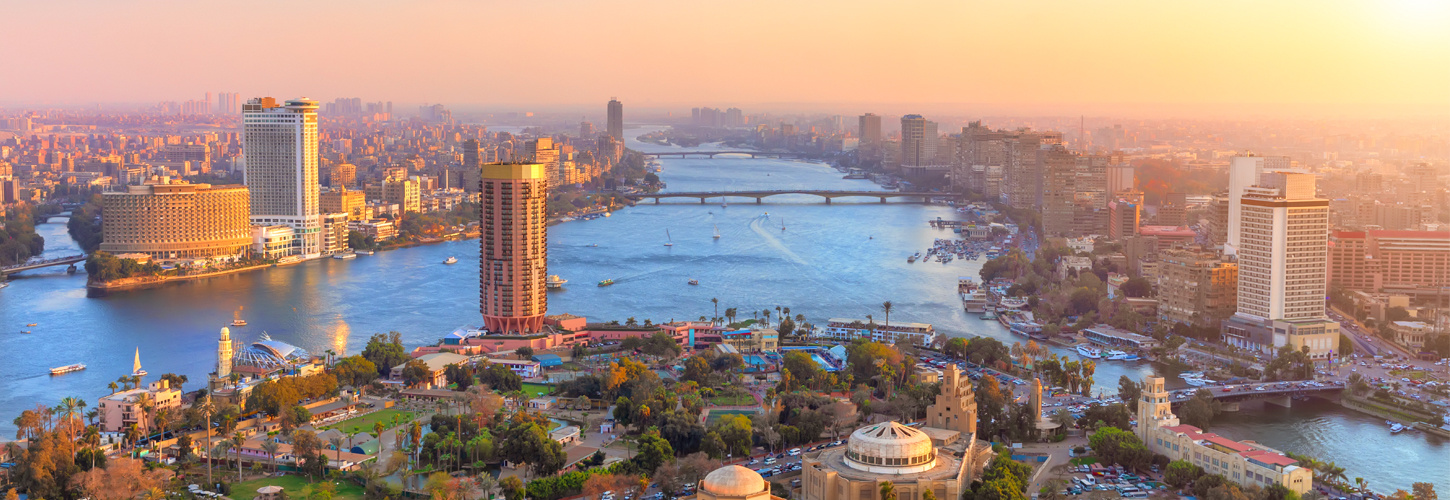
The pharaohs of the Eighteenth Dynasty, the Nineteenth Dynasty, and the Twentieth Dynasty made the Valley of the Kings their final resting place. Then there’s the Deir el-Bahari temple, the Temple of Queen Hatshepsut, and the Colossi of Memnon.
There will be a departure from Cairo in the afternoon.
After that, you will be transferred to the airport for your return flight. Enjoy your time away.
